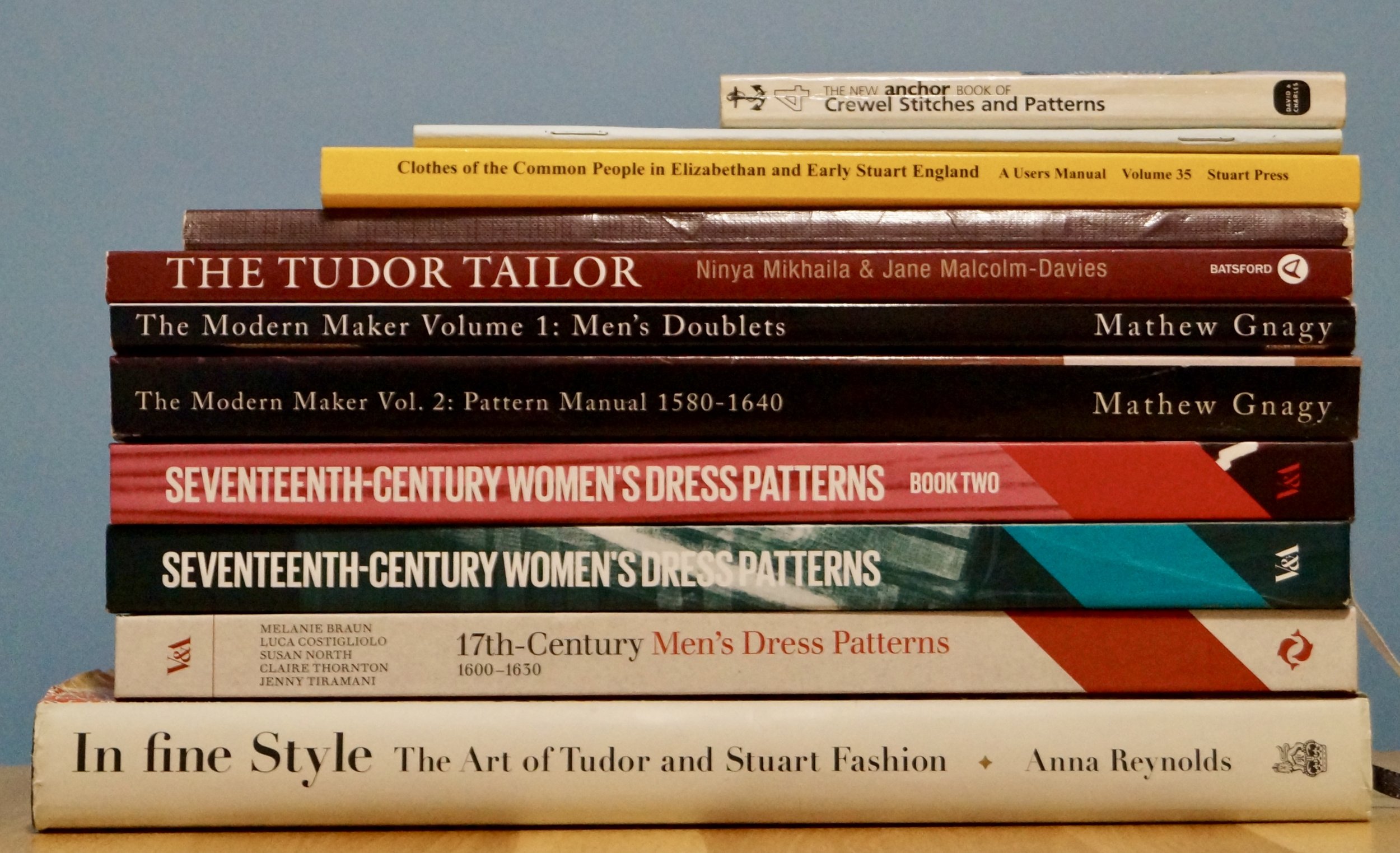Finding the Patterns
Here are some of the sources that we use to find patterns that are authentic. Some are better than others in terms of construction. In the Blog you will find book reviews based on long experience of trying to make clothes from various books.
Find the right pattern for what you want and it makes the fitting so much easier. Find the wrong pattern and you will be forever changing bits of it or feeling uncomfortable.
Some favourite pattern books
Pattern Books
We are fortunate that so many good fashion and textile historians are interested in making clothes now. Mostly, this is for the film and stage industry but re-enactors can join in too. This means that each person making a range of items does not need to be an academic in that topic.
The skill is in interpreting all the different systems, presentations and drawings and knowing how fabric should be treated to make it into 3 dimensional shapes. That is the skill of the tailor.
Flemish Wedding Party, ANONYMOUS
Paintings and Woodcuts
How should the extant item be worn? what would go with that collar or that doublet? This is where the paintings and woodcuts come in. Depictions of servants and country folk in scenery paintings, woodcuts of bakeries and kitchens, paintings of a wealthy family at dinner all provide evidence of what was being worn and how.
A woodcut from the BalLad of Robin Hood
Primary Researchers and Suppliers
We do not carry out primary research at Properly Dressed, such as looking at original clothing and amassing museum and pictorial evidence for clothing fashions, but we are happy to learn from those who do.
The School of Historical Dress are an organisation carrying out primary research in historical costume and passing on this knowledge in the form of books and courses. They follow on from the Janet Arnold philosophy of studying extant garments and then giving detailed patterns and instructions based on them. See the blog for more details.
Currently around the world, there are also a number of specialist academic, professional and amateur historians who widely publish their findings. These range from Matthew Gnagy (tailor turned academic), through Stuart Peachy (historian and re-enactor who publishes books and pamphlets) to The Bored Tailor (amateur who shares images of garments and techniques on Facebook) among many others.




